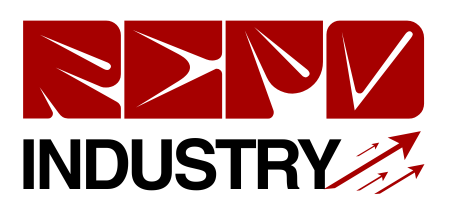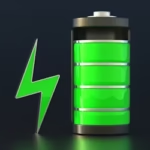Red dot sights have revolutionized the shooting world, significantly offering shooters the tools to enhance speed and accuracy. These optics are particularly valuable when split-second decisions could mean the difference between hitting or missing a target. Whether hunting a fast-moving game or aiming for a bullseye on a target range, selecting the right red dot sight and understanding the installation process can profoundly impact your shooting performance.
Getting the most from a red dot sight is not just about installation. It involves a deeper understanding of how these tools work and how to fine-tune them to enhance precision in various shooting contexts. This article is your comprehensive guide, blending practical installation advice with insights into optimizing your shooting experience. Whether you are a novice shooter or a seasoned professional, mastering the art and science of red dot optics can elevate your practice to new heights and open doors to advanced shooting techniques.
Key Takeaways:
- Gain insight into the workings and benefits of red dot sights for shooters of all levels.
- Understand the basics and intricacies involved in the installation of these advanced sights.
- Explore techniques that enhance shooting precision through proper sight alignment and maintenance.
- Acquire essential tips for maintaining and troubleshooting your red dot sight to ensure optimal performance.
Understanding Red Dot Sights
What is a Red Dot Sight?
A red dot sight is a non-magnifying reflector sight often used on firearms and other devices requiring precision aiming. It functions by projecting a dot—usually red—onto a piece of glass or similar medium, allowing the shooter to line up the dot with the target in their sightline. For a streamlined installation process, services that offer fast optic milling are invaluable, as they provide customized cuts specific to each firearm, ensuring a perfect fit for your setup. This mechanism negates the traditional alignment process required by iron sights. Instead of aligning three points, shooters only have to align the dot and the target, increasing their shooting speed and accuracy. Red dot sights have several adjustments to cater to different shooting environments and preferences, making them highly adaptable and favored among tactical shooters and hunters alike.
Advantages of Using Red Dot Sights
Red dot sights are renowned for helping shooters aim faster and more precisely, especially in high-stress or fast-paced situations. These sights improve target acquisition by eliminating the need to focus back and forth between the sight and the target. This benefit is particularly pronounced when comparing red dot sights to iron sights, which can be cumbersome in rapidly changing environments or low-light conditions. Moreover, red dot sights provide a [seamless aiming experience](https://www.pewpewtactical.com/red-dot-sights-guide/) and are versatile enough to be employed effectively across various firearms, including rifles, shotguns, and handguns.
Choosing the Right Red Dot Sight
Different Types of Red Dot Sights
Shooters can choose between open or closed tube models when considering a red dot sight. Open sights are designed to be lightweight and provide a broader field of view, ideal for situations requiring rapid target transitions. On the other hand, closed-tube models offer increased durability and better protection against the elements, making them suitable for outdoor use in adverse weather conditions. Battery life is also critical, as frequent replacement can influence the site’s reliability during prolonged use. The variety of styles and features available ensures that there is an appropriate model to match each shooter’s needs and preferences.
Factors to Consider When Purchasing
Potential buyers should weigh the cost against performance when purchasing a red dot sight. While high-end models offer advanced features and improved durability, budget options can still provide acceptable performance for casual users. Ensuring that the chosen model is compatible with your firearm type is crucial, as incorrect fitment can lead to misalignments or more severe issues like damage to the firearm itself. A well-matched sight enhances shooting capability and ensures the durability and longevity of both the sight and the gun.
Installation Essentials for Red Dot Sights
Tools Required for Installation
Installation of a red dot sight requires more than just a screwdriver. Essential tools include a universal mounting tool for attachments, precision screwdrivers for securing the sights accurately, and a thread locker to prevent screws from loosening due to vibration. A robust and sturdy mount is necessary as it provides a reliable base that maintains the accuracy and alignment of the sight. Aiming accuracy heavily depends on these elements being correctly installed and secured.
Steps to Install a Red Dot Sight
The installation process involves several critical steps that must be followed precisely to ensure optimal results:
- Begin by securing the firearm in a stable position to prevent movement during installation.
- Attach the mount to the firearm, ensuring it is securely fitted to prevent wobble or shift with recoil.
- Align the red dot sight on the mount with precision and secure it in place with screws. Use a torque wrench, if available, to apply the manufacturer-recommended amount of torque.
- Once mounted, check the sight for proper alignment and adjust to achieve optimal positioning.
It is important not to overtighten the screws, as this can strip the threads or cause damage to both the sight and the firearm. Following these steps ensures a solid installation that enhances accuracy and performance.
Fine-Tuning for Optimal Performance

Zeroing Your Red Dot Sight
Zeroing your red dot sight is crucial to aligning the point of aim with the bullet’s point of impact, ensuring precision during shooting. This involves adjusting the sight’s elevation and windage to match the cartridge’s ballistic behavior. Shooting at a set distance—commonly 25 to 50 yards—is an ideal start for calibrating the sight. Regular range practice is necessary to keep the sight zeroed, as changes in environmental conditions and wear and tear can affect this alignment over time.
Understanding MOA (Minute of Angle)
MOA, or Minute of Angle, is often encountered in sight adjustments. One MOA equals 1.047 inches at 100 yards; hence, mastering MOA allows shooters to fine-tune their sights with precision adjustments, which is critical for long-range shooting accuracy. Detailed guidance on utilizing MOA can be found through resources like the NRA’s [comprehensive guide](https://www.nrablog.com/articles/2018/7/the-moa-made-easy/), which simplifies these calculations and ensures that shooters can make informed adjustments for various distances and scenarios.
Maintaining Your Red Dot Sight
Cleaning and Maintenance Tips
Maintaining your red dot sight is necessary to sustain its performance and longevity. Use a microfiber cloth to clean the lenses, avoiding abrasive materials that might scratch the glass. Checking battery life routinely is essential to prevent unexpected drainage, especially during critical moments. Store the sight in an area protected from extreme temperatures and humidity, which could impair its components or affect electronic functionality.
Troubleshooting Common Issues
Despite their robustness, red dot sights can encounter issues like battery failure or fogging. Regular checks and timely replacements are the first defense against these common problems. Ensuring all contacts are clean and dry will prevent electrical connectivity issues and maintain the site’s readiness. Engaging in regular inspections will highlight any emerging concerns before they develop into more significant, longer-lasting issues.
Red Dot Sights in Action: Real-Life Applications
Scenarios Where Red Dot Sights Shine
While red dot sights excel in competitive shooting environments, their utility extends to hunting and tactical operations. Their ability to provide rapid target acquisition and consistent tracking is invaluable when dealing with moving targets. These attributes translate into improved operational efficiency and heightened situational awareness for military and law enforcement operatives.
Feedback from Experienced Shooters
Testimonials from veteran shooters often highlight the significant improvements in accuracy and competitive advantage conferred by red dot sights. These insights emphasize enhanced accuracy achieved with less training time and increased confidence in shooting scenarios, underscoring the transformative potential of adopting red dot technology.
Conclusion: The Future of Red Dot Sights in Shooting
Advancements in Technology
The future of red dot sights is vibrant, with technological advancements continually improving their effectiveness. Innovations such as miniaturization, enhanced durability against the elements, and integrating innovative functionalities are on the horizon, promising to further refine shooting accuracy and purpose.
Summary of Benefits and Tips
In conclusion, a well-installed and adequately maintained red dot sight can dramatically improve any shooter’s performance. Understanding the nuances of red dot technology, from installation to ongoing maintenance, allows shooters to realize the potential benefits fully. With the proper knowledge and tools, shooters can confidently adopt these sights as a staple in their shooting repertoire, ready to face diverse conditions and scenarios.











